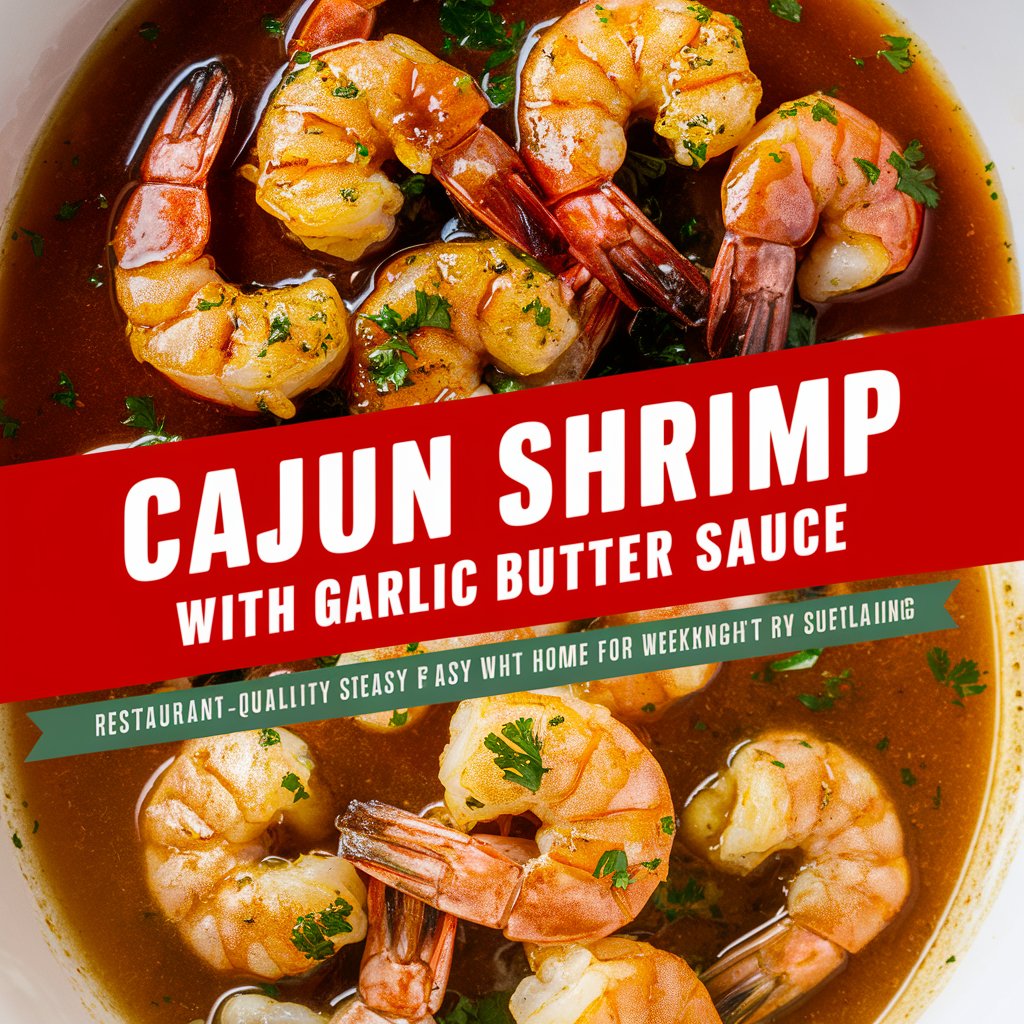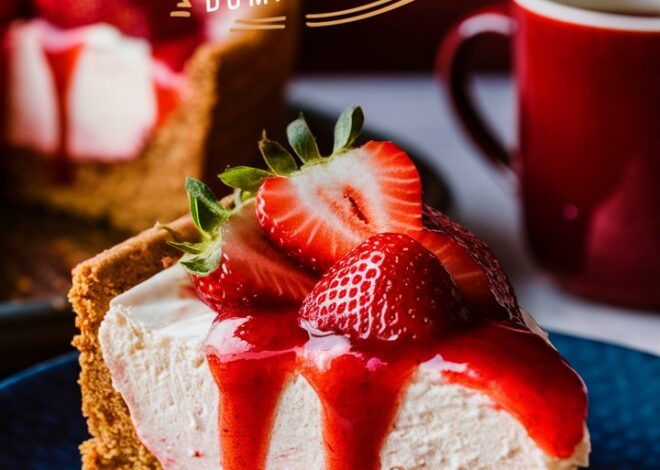
Spicy Cajun Shrimp in Garlic Butter – 20-Minute Dinner 2025
Preparation Time: 10 minutes | Cooking Time: 10 minutes | Total Time: 20 minutes
Transform ordinary weeknight cooking into an extraordinary culinary experience with this restaurant-quality Cajun shrimp recipe that delivers maximum flavor in minimal time. This comprehensive guide provides professional techniques, ingredient science, and expert variations to create the perfect balance of heat, richness, and aromatic complexity.
Why This Recipe Stands Above the Rest
This meticulously crafted recipe combines traditional Louisiana Cajun techniques with modern cooking science to achieve optimal flavor development in just 20 minutes. The secret lies in understanding protein denaturation timing, spice bloom techniques, and emulsion chemistry that creates the signature glossy garlic butter sauce.
Premium Ingredient Selection Guide
Shrimp Quality Indicators
Fresh Shrimp Selection:
- Seek firm, translucent flesh with a sweet oceanic aroma
- Avoid specimens with black spots, ammonia odors, or slimy texture
- Size recommendation: 16-20 count per pound for optimal cooking consistency
- Wild-caught Gulf shrimp provides superior flavor complexity
Frozen Shrimp Optimization:
- Choose individually quick-frozen (IQF) varieties
- Thaw using cold water immersion method (15-20 minutes)
- Pat completely dry to prevent moisture interference with seasoning adherence
Cajun Seasoning Architecture

Professional Blend Ratios (Makes 3 tablespoons):
- 1 tablespoon sweet paprika (base flavor foundation)
- 1 teaspoon garlic powder (aromatic depth)
- 1 teaspoon onion powder (sweetness balance)
- 1 teaspoon dried oregano (herbaceous notes)
- 1 teaspoon dried thyme (earthy complexity)
- ¾ teaspoon cayenne pepper (heat control)
- ½ teaspoon black pepper (pungency)
- ½ teaspoon white pepper (clean heat)
- 1 teaspoon kosher salt (flavor enhancement)
- ½ teaspoon smoked paprika (depth amplification)
Advanced Technique: Toast whole spices in a dry skillet for 30 seconds before grinding to unlock volatile oil compounds and intensify flavor profiles.

Master Recipe (Serves 4-6)
Essential Ingredients

- 2 pounds large shrimp (16-20 count), peeled and deveined
- 3 tablespoons custom Cajun seasoning blend
- 6 tablespoons European-style unsalted butter
- 8 cloves garlic, microplaned or finely minced
- 2 tablespoons high-quality olive oil
- ¼ cup dry white wine (optional, for deglazing)
- 2 tablespoons fresh lemon juice
- 2 tablespoons fresh parsley, finely chopped
- 1 teaspoon hot sauce (Crystal or Tabasco preferred)
- ½ teaspoon smoked paprika (finishing touch)

Professional Cooking Method
Step 1: Shrimp Preparation Excellence Pat shrimp completely dry using paper towels. Moisture is the enemy of proper seasoning adherence and achieving the desired caramelization. Toss shrimp with Cajun seasoning in a large bowl, ensuring even distribution. Allow to rest for 5-10 minutes for optimal flavor penetration.
Step 2: Temperature Control Mastery Heat a large cast-iron or stainless steel skillet over medium-high heat until it reaches approximately 375°F. Add olive oil and swirl to coat evenly. The oil should shimmer but not smoke, indicating optimal cooking temperature.
Step 3: Achieving Perfect Sear Add seasoned shrimp in a single layer without overcrowding. Cook undisturbed for 90 seconds to develop proper Maillard reaction browning. Flip once and cook additional 60-90 seconds until internal temperature reaches 145°F.
Step 4: Garlic Butter Emulsion Technique Reduce heat to medium-low. Push shrimp to one side of pan. Add butter to empty space, allowing it to melt without browning. Add minced garlic to butter, cooking for 30-45 seconds until fragrant but not colored.
Step 5: Sauce Integration Toss shrimp through the garlic butter mixture, coating evenly. Add white wine if using, allowing alcohol to cook off for 30 seconds. Remove from heat and immediately add lemon juice, hot sauce, and fresh parsley.
Advanced Techniques for Exceptional Results
Temperature Science
Shrimp proteins begin coagulating at 140°F, reaching optimal texture at 145°F internal temperature. Overcooking beyond 150°F results in rubber-like texture due to excessive protein contraction.
Flavor Layering Strategy
The key to restaurant-quality results lies in building flavor layers: initial seasoning penetration, high-heat caramelization, aromatic oil infusion, and bright acid finishing.
Sauce Consistency Mastery
For silkier sauce consistency, remove pan from heat before adding final butter portion. Swirl vigorously to create a stable emulsion that coats shrimp beautifully without breaking.
Expert Variations and Customizations
Heat Level Adjustments
- Mild Version: Reduce cayenne to ¼ teaspoon, omit white pepper
- Fire Level: Add 1 teaspoon chipotle powder and ½ teaspoon ghost pepper powder
- Smoky Depth: Include 1 teaspoon liquid smoke and additional smoked paprika
Protein Alternatives
- Cajun Chicken: Pound chicken breasts to ¾-inch thickness, increase cooking time to 6-8 minutes per side
- Scallops: Use dry-packed sea scallops, cook 2-3 minutes per side
- Mixed Seafood: Combine shrimp with crawfish tails and lump crabmeat
Dietary Adaptations
- Keto-Friendly: Serve over cauliflower rice or zucchini noodles
- Dairy-Free: Substitute butter with ghee or avocado oil
- Low-Sodium: Create custom spice blend without added salt, rely on natural shrimp sweetness
Optimal Serving Suggestions
Traditional Pairings
- Louisiana-Style: Over stone-ground white grits with sharp cheddar
- Contemporary: Tossed with angel hair pasta and fresh herbs
- Health-Conscious: Over mixed greens with avocado slices
Wine Pairing Expertise
Professional Storage and Reheating
- White Wines: Crisp Sauvignon Blanc or unoaked Chardonnay
- Rosé: Dry Provence-style rosé complements spice levels
- Beer: Belgian wheat beer or American pale ale
Proper Storage Protocol
Refrigerate leftovers within 2 hours in airtight containers. Consume within 48 hours for optimal quality and food safety compliance.
Reheating Excellence
Reheat gently in skillet over low heat with additional butter to prevent overcooking. Microwave reheating not recommended as it compromises texture.
Nutritional Excellence (Per Serving)
- Calories: 285
- Protein: 34g (high biological value)
- Fat: 14g (primarily healthy monounsaturated)
- Carbohydrates: 3g
- Sodium: 680mg
- Key Nutrients: Selenium, iodine, omega-3 fatty acids
Troubleshooting Common Issues
Preventing Overcooking
Monitor shrimp closely as they transition from translucent to opaque. Remove immediately when they form a C-shape; S-shaped shrimp indicate overcooking.
Seasoning Balance
Taste and adjust seasoning after cooking. Add additional lemon juice for brightness or hot sauce for heat intensity.
Sauce Separation Prevention
Maintain moderate heat when creating butter emulsion. High temperatures cause sauce breakdown and oil separation.
Chef’s Professional Tips
Success with this recipe depends on mise en place preparation, proper temperature control, and understanding that shrimp continue cooking from residual heat even after removing from flame. The difference between good and exceptional lies in attention to these critical details.
Master this technique, and you’ll possess a versatile foundation for countless Cajun-inspired variations that will elevate your home cooking to professional standards.


